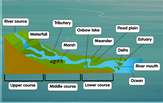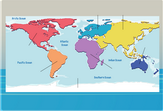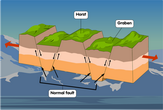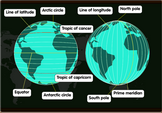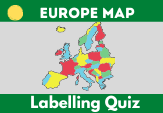Faulting diagram
Faults are the lines and cracks on the surface of the Earth that usually depict the boundaries between two blocks of rocks, or plates. As you can recall from the plate tectonics theory, these plates constantly swim on top of a layer of slightly melted rock underground called the asthenosphere.
Faults form naturally to help two neighboring blocks move in different directions relative to each other.
We can take a closer look at this fault diagram to observe a few important parts. Faults in which the two blocks of rocks move vertically are called dip-slip faults. If the blocks move horizontally past one another, the fault is considered a strike-slip fault.
We can identify the hanging wall as the block with a cliff that hangs over the other block, which is known as the footwall. In a normal dip-slip fault, we can observe that the hanging wall slides downward relative to the footwall. Geologists have observed that normal faults are the most prevalent fault type on Earth.
On the other hand, the fault is considered a thrust fault or reverse fault when its hanging wall rises above the footwall.
Review the definition of a fault and its relation to the concepts of plate tectonics and earthquakes with our detailed faulting diagram.

